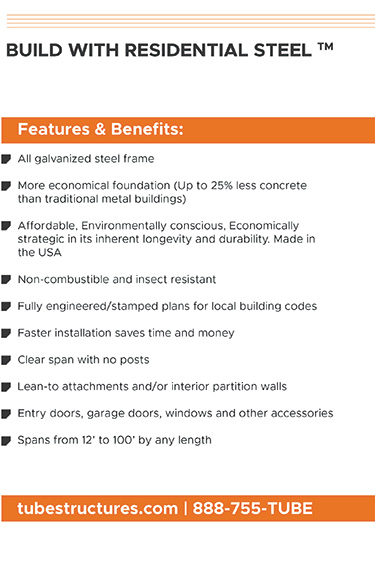Bid-price PPI dips, input costs drop, job growth slows, AGC says
- October 20, 2020
- Posted by: Alan Hageman
- Category: News

Contractors’ bid prices dipped 0.1% from October to November, while materials and services input costs declined 0.4%, based on an Associated General Contractors of America’s (AGC) analysis of producer price indexes (PPIs) that the Bureau of Labor Statistics posted on Thursday. Compared to November 2018, the PPI for new nonresidential building construction—a measure of the price that contractors say they would charge to build a fixed set of buildings—rose 3.7% year-over-year, the smallest year-over-year gain in 14 months. Increases ranged from 3% year-over-year for new office buildings to 3.1% for healthcare buildings, 4.2% for industrial buildings, 4.4% for schools and 4.6% for warehouses. Increases in PPIs for subcontractors’ new, repair and maintenance work on nonresidential buildings ranged from 3.5% year-over-year for electrical contractors to 3.6% for plumbing contractors, 3.8% for roofing contractors and 4.5% for concrete contractors. The PPI for inputs to construction—excluding capital investment, labor and imports—inched up 0.2% year-over-year, a sharp deceleration from the 5.1% increase one year earlier. This index covers both goods (56%) and services (44%). The PPI for energy inputs to construction tumbled 9.3% year-over-year. The PPI for nonenergy goods inputs rose 0.4% year-over-year; the index for services inputs increased 1.7% year-over-year. Price increases turned negative for some previously fast-rising inputs such as diesel fuel (down 16% year-over-year, following an 18% jump a year earlier); steel mill products (-15% year-over-year, following a 21% gain); aluminum mill shapes (-5.8% year-over-year, following a 6.9% pickup); and asphalt paving mixtures and blocks (-1% year-over-year, following a 9.2% rise).
Nonfarm payroll employment in November increased by 266,000, seasonally adjusted, from October and by 2,204,000 (1.5%) year-over-year from November 2018, BLS reported on December 6. The unemployment rate dipped from 3.6% in October to 3.5%, matching the 50-year low reached in September. Construction employment rose by 1,000 for the month and 146,000 (2%) year-over-year to 7,530,000, a 12-year high. Although construction employment continues to grow faster year-over-year than overall employment, the industry’s growth rate was the slowest in nearly seven years and less than half of the 4.6% rate a year earlier. Average hourly earnings in construction rose 2.7% year-over-year to $31.08, 10% above the average for all private-sector employees ($28.29, a 3.1% year-over-year increase). The unemployment rate in construction, not seasonally adjusted, increased from 3.9% in November 2018 to 4.4% and the number of unemployed jobseekers with construction experience rose from 375,000 to 428,000. (Not-seasonally-adjusted data varies with normal weather and holiday patterns and thus should not be compared to levels in other months.)
Construction data firm ConstructConnect reported that the value of construction starts, not seasonally adjusted, increased 1.6% year-over-year in November from November 2018. Chief economist Alex Carrick noted, “Since large project groundbreakings can often introduce notable volatility in the monthly ‘starts’ numbers and their period-to-period percentage changes, it is informative to also study ‘smoothed’ series… On a 12-month moving average basis, November 2019’s total nonresidential starts were 8.3% versus the previous 12 months (i.e., December 2018-to-November 2019 versus December 2017-to-November 2018). Type-of-structure subcategory starts on the same 12-month-over-prior-12-month terms in November 2019 were: commercial, -2.6%; industrial, 60.5%; institutional, 4.8%; and engineering, 9.9%….The ‘smoothed’ grand total of starts, which includes residential, was 3.3% in November. Residential activity was -4.5% on a 12-month moving average basis, with multifamily starts retreating (-6.2%) a little more severely than single-family groundbreakings (-3.7%).”
There has been a dramatic shift in educational enrollments this decade, with major implications for demand for school and university construction. “The number of people enrolled in school in the United States reached 76.8 million in 2018… 2.2 million below the level reached in 2011,” the Census Bureau reported on Dec. 3. “Overall enrollment in kindergarten through 12th grade in 2018 was 53.1 million, compared with 53.7 million enrolled in 2011. Enrollment in K-12 private schools was 4.4 million in 2018, not statistically different from the level in 2009, after having fallen by 20% from 2000 to 2009…. Graduate school enrollment reached 4.1 million, an increase of 300,000 from 2011. The number of college students attending two-year institutions was 4.3 million, a decrease of 25% from 2011 when 5.7 million were enrolled.” Attendance at four-year colleges declined by 672,000 (-9%), with public four-year college enrollments dropping by 539,000 (-9%) and private enrollments by 134,000 (-15%). High school enrollments have been roughly level, implying that post-secondary enrollments may also level off for the next few years.
“Food retailers are making big bets on small warehouses,” the Wall Street Journal reported . “According to Jefferies Group LLC, facilities known as micro-fulfillment centers typically range from 10,000 to 20,000 square feet… These warehouses can be built in three to six months… Bigger centers can be larger than 300,000 square feet and…can be built in two to three years.” This trend may be one reason commercial warehouse construction spending slid 3.7%, seasonally adjusted, from October 2018 to October 2019, compared with a 16% jump one year earlier, according to Census Bureau data posted on Dec. 2.
An international agreement to lower the maximum sulfur content of marine fuel oil used in ocean-going vessels from 3.5% of weight to 0.5% is scheduled to take effect on January 1. This will add to demand for low-sulfur diesel fuel now used for trucks and off-road equipment. The Energy Information Administration forecasts in its monthly Short-Term Energy Outlook, released on Tuesday that “diesel wholesale margins [will] rise from an average of 45 cents per gallon in 2019 to a forecasted peak of 61 cents/gallon in the first quarter of 2020 and an average of 57 cents/gallon in 2020” as a whole.


